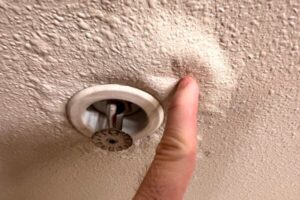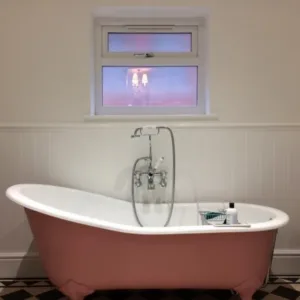Whether it’s a persistent drip from a leaking tap, a hidden plumbing leak, or a sewer system malfunction, the consequences of water infiltration can be far-reaching and costly. In this comprehensive guide, we will look into the issues of house leaks, shedding light on the typical causes of house leaks and equipping homeowners with the knowledge to prevent and address these issues effectively.
From dripping taps to faulty shower installations, understanding the root causes of house leaks is paramount to maintaining the integrity of your home. By being proactive and vigilant, you can safeguard your property against water damage.
With each mention of the common causes of house leaks, we’ll highlight the importance of early detection, proactive maintenance, and timely repairs. Our goal is to highlight just how important it is to protect your homes from the damaging effects of water intrusion.
So, whether you’re grappling with a leaky tap or concerned about the structural integrity of your home, this blog is your go-to resource for understanding and addressing house leaks effectively.
What Are House Leaks?
House leaks encompass a wide range of water infiltration issues that can occur within a residential property. From minor annoyances like dripping taps to major concerns such as plumbing leaks and sewer system malfunctions, house leaks can manifest in various forms and have significant implications for homeowners.
Understanding House Leaks: House leaks refer to any instance where water enters the home unintentionally, leading to moisture build-up and potential damage. These leaks can occur in different areas of the house, including bathrooms, kitchens, basements, and even the exterior.
Types of House Leaks:
- Plumbing Leaks: These include leaks from pipes, taps, toilets, and water heaters. They can result from wear and tear, corrosion, faulty installation, or sudden damage.
- Sewer System Leaks: Issues with the sewer system, such as blockages, pipe damage, or tree root intrusion, can cause leaks that pose health risks and require immediate attention.
- Exterior Leaks: External factors like weather, landscaping, and poor drainage can contribute to water infiltration through walls, windows, roofs, and foundations.
- Structural Leaks: Foundation cracks, settlement, and structural damage can compromise the integrity of the home, allowing water to seep in and cause damage.
Consequences of House Leaks: House leaks can lead to a range of consequences, including:
- Water damage to walls, ceilings, and floors
- Mould and mildew growth, which can pose health risks
- Structural damage and deterioration
- Increased risk of electrical hazards
- Reduced property value and resale potential
Preventing House Leaks: Early detection and proactive maintenance are key to preventing house leaks. Regular inspections, prompt repairs, and proper maintenance of plumbing and sewer systems can help mitigate the risk of leaks and minimise their impact on the home.

Common Causes of House Leaks: Plumbing
Plumbing leaks are among the most common culprits behind water infiltration in homes, often resulting from various factors such as wear and tear, corrosion, and faulty installation.
Types of Plumbing Leaks:
- Dripping Taps: A dripping tap may seem like a minor inconvenience, but it can waste a significant amount of water over time. Leaking taps are often caused by worn-out washers, O-rings, or faulty valve seals.
- Burst Pipes: Burst pipes can occur due to freezing temperatures, excessive water pressure, or corrosion. A burst pipe can lead to extensive water damage and requires immediate attention to prevent further complications.
- Leaking Pipes: Leaking pipes can develop gradually over time, leading to hidden water damage within walls, ceilings, or floors. Common causes of leaking pipes include corrosion, joint failures, and damage from nearby construction activities.
- Faulty Water Heaters: Water heaters can develop leaks due to corrosion, pressure build-up, or faulty components. A leaking water heater not only wastes water but can also cause damage to surrounding areas if not addressed promptly.
Detection and Prevention:
- Visual Inspection: Regularly inspecting plumbing fixtures, pipes, and water appliances can help detect leaks early. Look for signs of water stains, dampness, or corrosion, and address any issues promptly.
- Monitoring Water Usage: Monitoring your water bill for unexpected increases can indicate a potential leak. Keep an eye out for unexplained spikes in water consumption, which may signal an undetected plumbing leak.
- Maintaining Proper Water Pressure: Excessive water pressure can strain pipes and lead to leaks. Install a pressure regulator to ensure that water pressure remains within safe limits and avoid putting undue stress on your plumbing system.
- Professional Inspections: Periodic inspections by a licensed plumber can help identify hidden leaks and potential issues before they escalate. A professional plumber can also provide recommendations for repairs or upgrades to prevent future leaks.
Plumbing leaks can wreak havoc on homes, causing water damage, mould growth, and structural issues if left unchecked. By understanding the common types of plumbing leaks and implementing proactive measures for detection and prevention, homeowners can safeguard their properties against the damaging effects of water infiltration.
Sewer System Problems
Sewer system problems pose a significant risk of water infiltration and can lead to serious consequences for homeowners.
Common Sewer System Problems:
- Blockages: Blockages in sewer lines can occur due to the build-up of debris, grease, tree roots, or foreign objects. Blocked sewer lines restrict the flow of wastewater, leading to backups and potential leaks.
- Pipe Damage: Sewer pipes can sustain damage from various sources, including age, corrosion, ground shifting, and invasive tree roots. Cracked or broken sewer pipes allow wastewater to escape into the surrounding soil, causing damage and contamination.
- Tree Root Intrusion: Tree roots seeking moisture and nutrients can infiltrate sewer lines through cracks or joints. Once inside the pipes, tree roots can obstruct flow, cause pipe damage, and lead to leaks.
- Joint Failures: Weak or deteriorated pipe joints are prone to failure, allowing water to escape from the sewer system. Joint failures may result from age, poor installation, or ground movement.
Detection and Resolution:
- Sewer Camera Inspection: A sewer camera inspection is a non-invasive method for identifying sewer system problems. By inserting a small camera into the sewer lines, plumbers can visually inspect the pipes and pinpoint any issues, such as blockages, cracks, or root intrusion.
- Hydro Jetting: Hydro jetting is a powerful cleaning technique that uses high-pressure water to clear blockages and remove debris from sewer lines. This method is effective for removing tree roots, grease buildup, and other obstructions that contribute to sewer system problems.
- Pipe Repair or Replacement: Depending on the severity of the damage, sewer pipes may need repair or replacement. Trenchless pipe repair techniques, such as pipe lining or pipe bursting, offer minimally invasive solutions for restoring damaged sewer lines without extensive excavation.
- Preventive Maintenance: Regular maintenance of sewer lines is essential for preventing problems before they occur. Periodic sewer inspections, proactive root control measures, and proper disposal practices can help minimise the risk of sewer system leaks and backups.
Sewer system problems can have serious implications for homeowners, ranging from property damage to health hazards. By understanding the common issues that affect sewer lines and taking proactive measures for detection and resolution, homeowners can protect their properties and ensure the proper functioning of their sewer systems.
Bathroom Fixtures and Installations
Bathroom fixtures and installations play a crucial role in the functionality of a home’s plumbing system. However, problems with these fixtures can lead to water leaks and cause damage if left unaddressed.
Common Bathroom Fixture Leaks:
- Leaky Taps: Leaky taps are a common annoyance that can waste water and lead to higher utility bills. The most common cause of leaky taps is worn-out washers or O-rings, which can easily be replaced to resolve the issue.
- Shower Leaks: Shower leaks can occur due to damaged seals, loose connections, or faulty installation. Water pooling around the base of the shower or dampness on adjacent walls may indicate a leak that requires attention.
- Toilet Leaks: Toilet leaks can occur at the base of the toilet or around the tank and bowl connections. Signs of a toilet leak include water pooling on the floor, a constantly running toilet, or dampness around the toilet base.
- Sink Leaks: Leaks beneath the sink can result from loose connections, damaged seals, or corroded pipes. Water stains or mould growth in the cabinet beneath the sink may indicate a leak that needs to be addressed.
Prevention and Repair:
- Proper Installation: Ensure that bathroom fixtures are installed correctly to prevent leaks from occurring. Hire a professional plumber for installation to ensure a proper fit and seal.
- Regular Maintenance: Perform regular maintenance on bathroom fixtures, including cleaning, lubricating moving parts, and inspecting for signs of wear or damage.
- Prompt Repairs: Address any leaks or plumbing issues as soon as they are detected to prevent further damage. Replace worn-out parts, tighten loose connections, and seal any gaps or cracks to prevent leaks from worsening.
- Upgrades and Replacements: Consider upgrading old or inefficient fixtures with newer, water-efficient models to prevent future leaks and conserve water.
Bathroom fixtures and installations are susceptible to leaks and other plumbing issues that can compromise the integrity of a home. By understanding the common causes of bathroom fixture leaks and taking proactive measures for prevention and repair, homeowners can maintain a functional and leak-free plumbing system.

Exterior Factors
External factors such as weather conditions, landscaping, and poor drainage can significantly impact the integrity of a home’s exterior and contribute to water infiltration.
Weather Conditions:
Extreme weather events, including heavy rain, snow, and wind, can put stress on a home’s exterior and increase the risk of water infiltration. Leaks may occur through compromised roofing materials, damaged siding, or gaps around windows and doors during severe weather conditions.
Landscaping:
Landscaping features such as flower beds, shrubs, and trees can affect water drainage around the home. Poorly designed landscaping or overgrown vegetation can direct water towards the foundation or obstruct drainage pathways, leading to water infiltration and foundation problems.
Poor Drainage:
Inadequate drainage systems, such as clogged gutters, downspouts, or improper grading around the foundation, can result in water pooling around the home. This excess water can seep into the basement, crawl space, or foundation walls, causing leaks and structural damage over time.
Preventing Exterior Factors from Causing House Leaks:
- Maintain Gutters and Downspouts: Regularly clean gutters and downspouts to ensure proper water flow and prevent clogs that can lead to water overflow and leaks.
- Trim Vegetation: Trim trees, shrubs, and other vegetation near the home to prevent roots from infiltrating sewer lines or causing damage to the foundation. Maintain a clear distance between landscaping features and the home’s exterior walls.
- Ensure Proper Grading: Ensure that the ground around the home slopes away from the foundation to direct water away from the house. Fill in low spots and adjust grading as needed to prevent water from pooling near the foundation.
- Inspect and Maintain Exterior Surfaces: Regularly inspect the roof, siding, windows, and doors for signs of damage or deterioration. Repair any cracks, gaps, or damaged seals to prevent water infiltration during inclement weather.
By understanding the impact of these exterior factors and implementing proactive measures for prevention and maintenance, homeowners can protect their properties and ensure a dry and secure living environment.
In this blog, we’ve explored the common causes of house leaks and provided insights into detection, prevention, and resolution strategies.
From plumbing leaks and sewer system problems to exterior factors and bathroom fixture issues, understanding the root causes of house leaks is essential for maintaining the integrity of your home.
Regular maintenance, prompt repairs, and professional inspections are key components of leak prevention and mitigation. By implementing these practices and staying informed about the common causes of house leaks, homeowners can protect their properties and ensure a safe and dry living environment for themselves and their families.
Ready to safeguard your home against house leaks? Schedule a professional inspection today and take proactive steps to protect your property. Don’t wait until it’s too late—act now to ensure a dry and secure living environment for you and your family.


